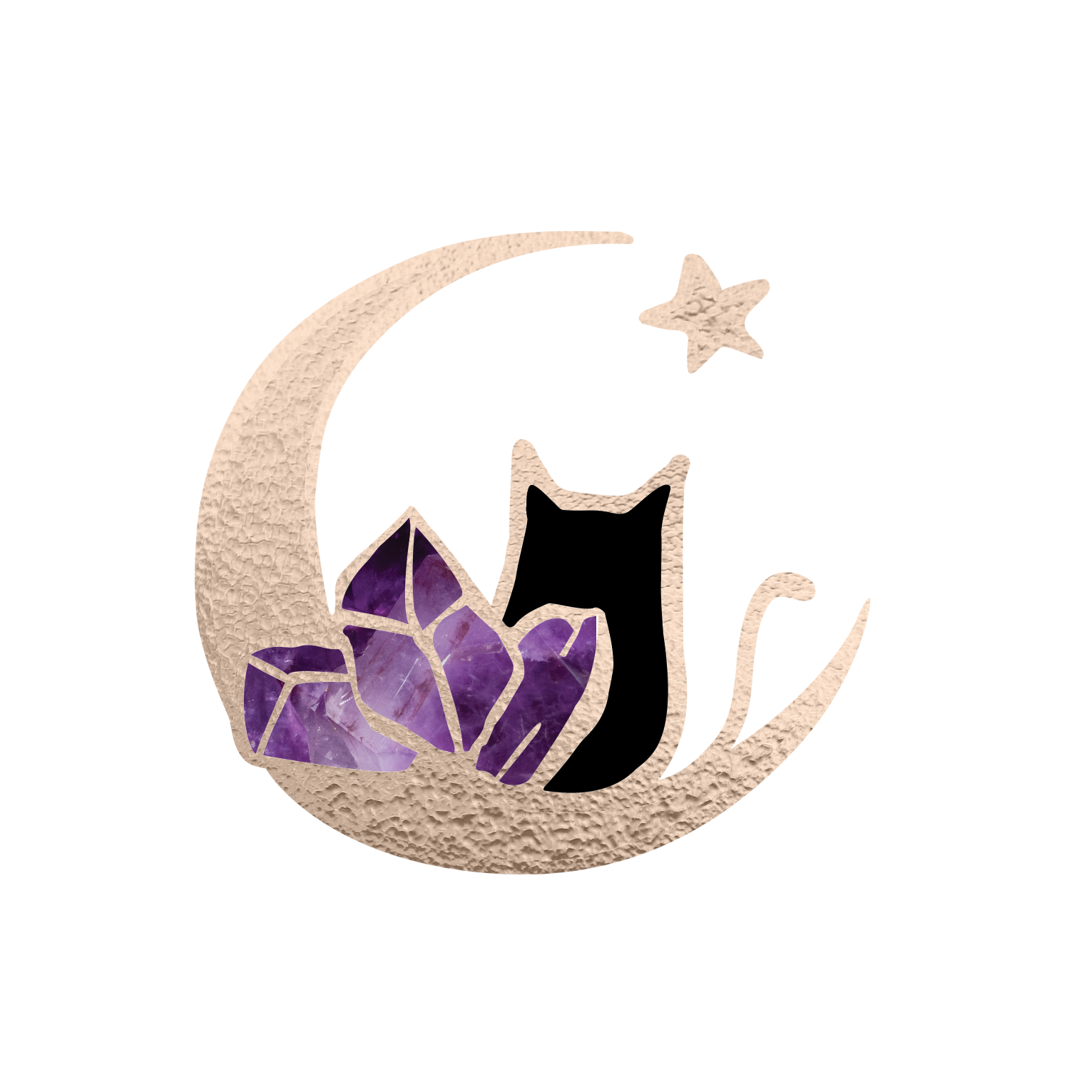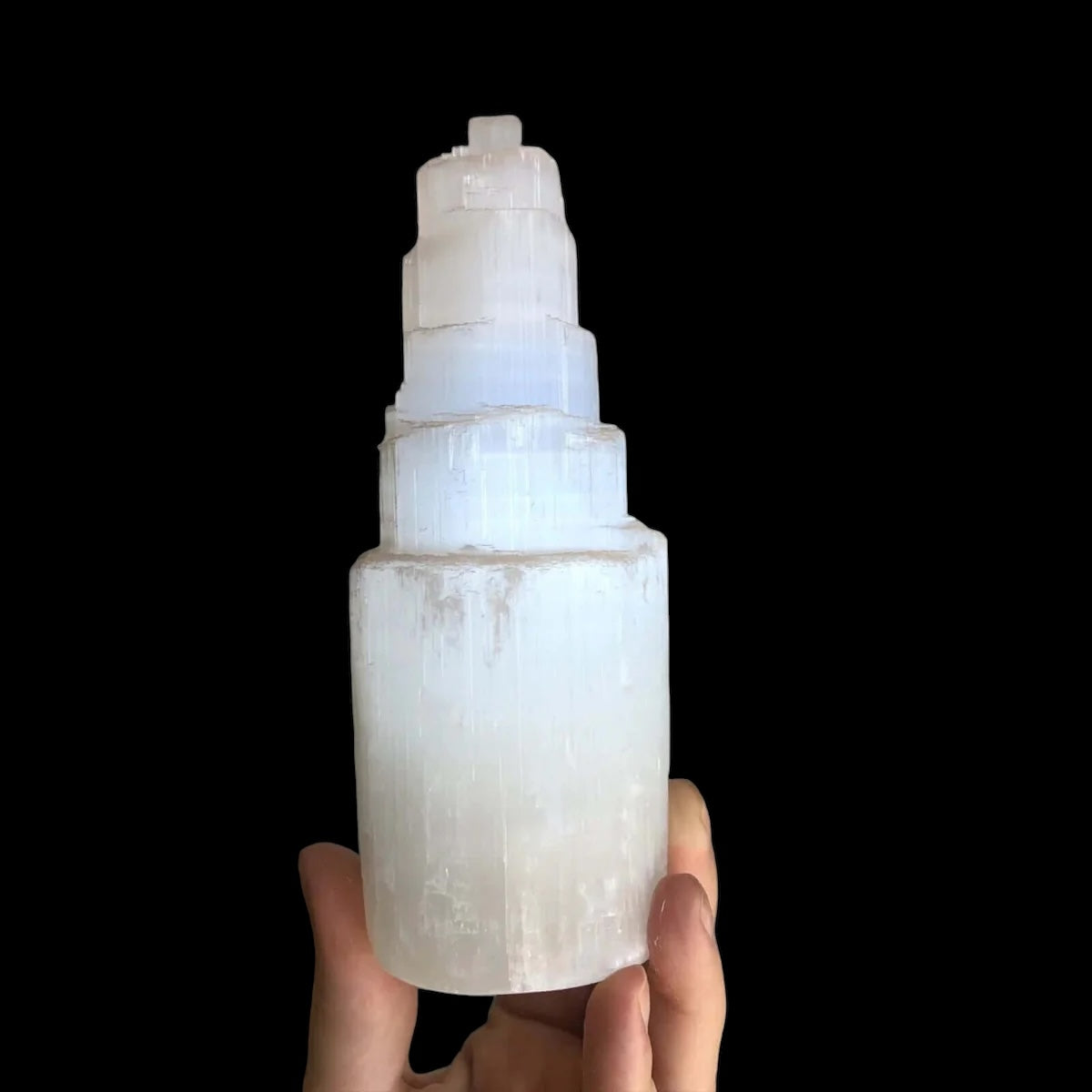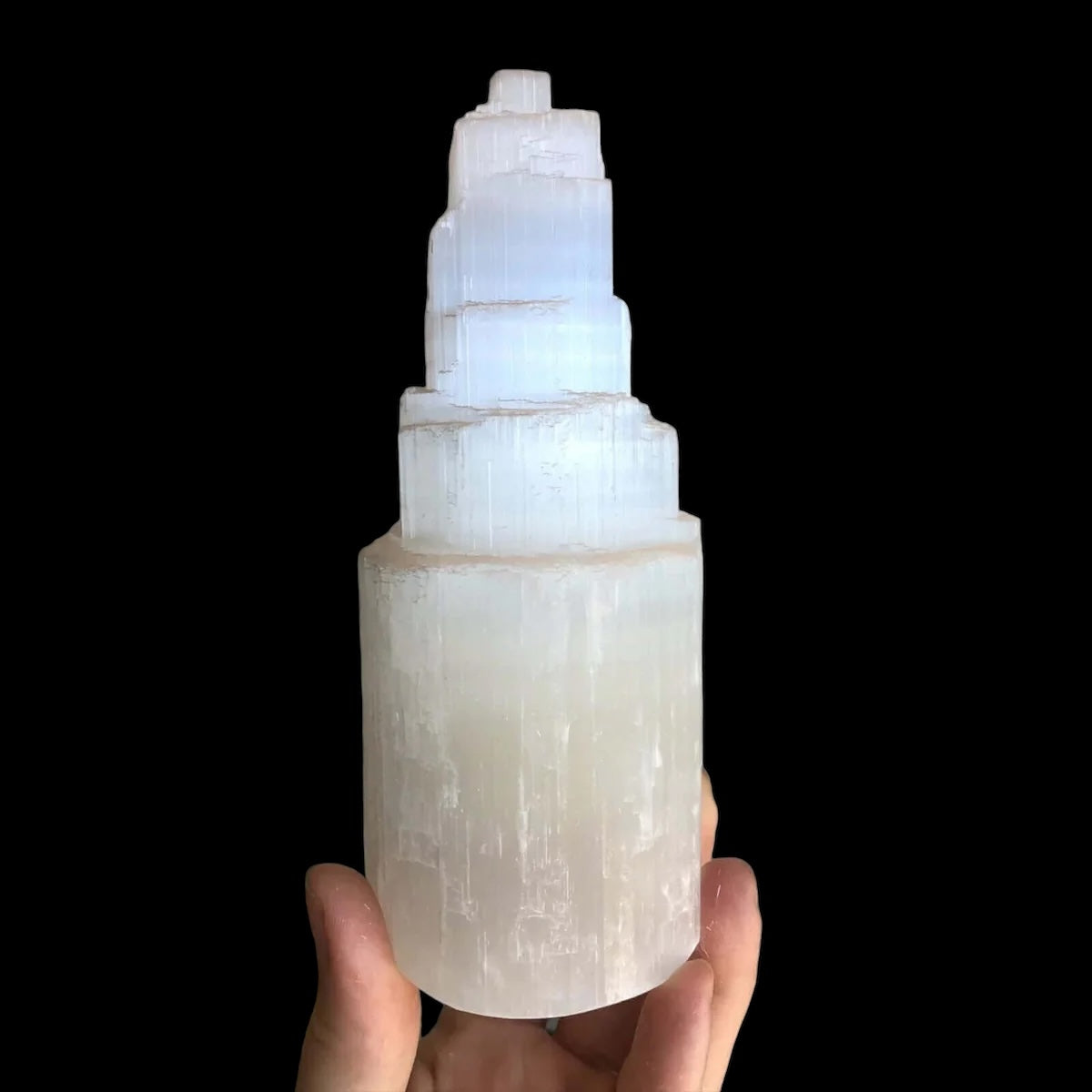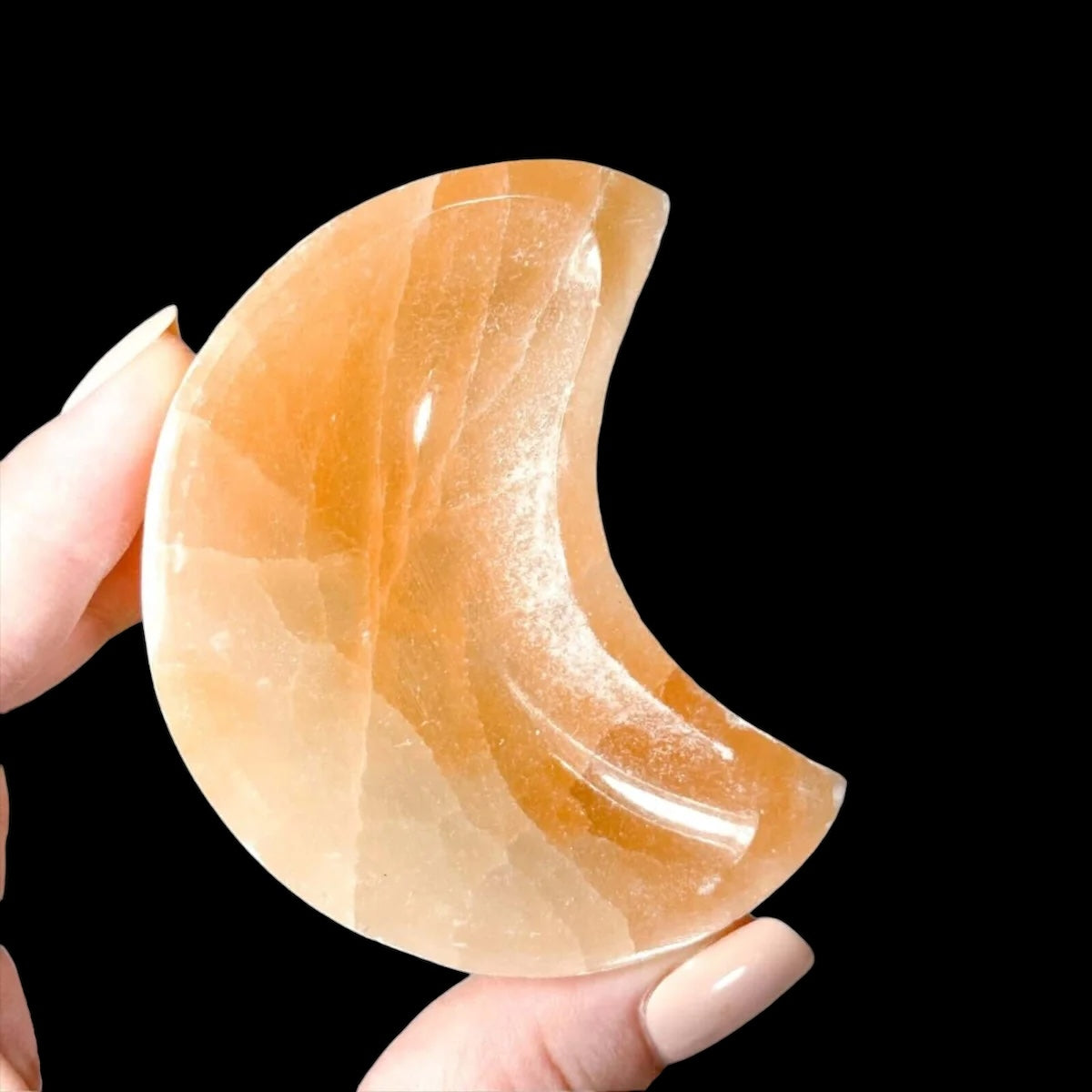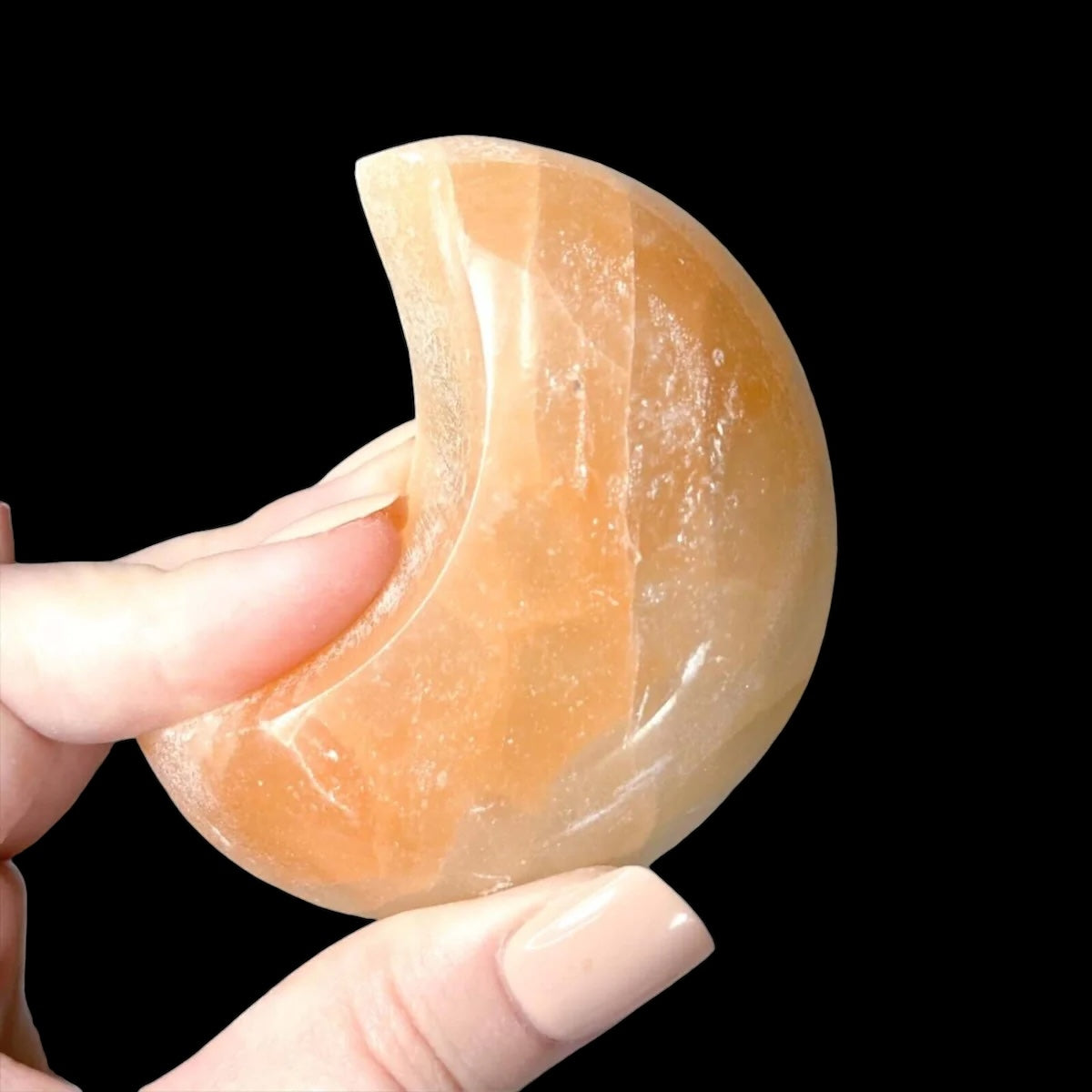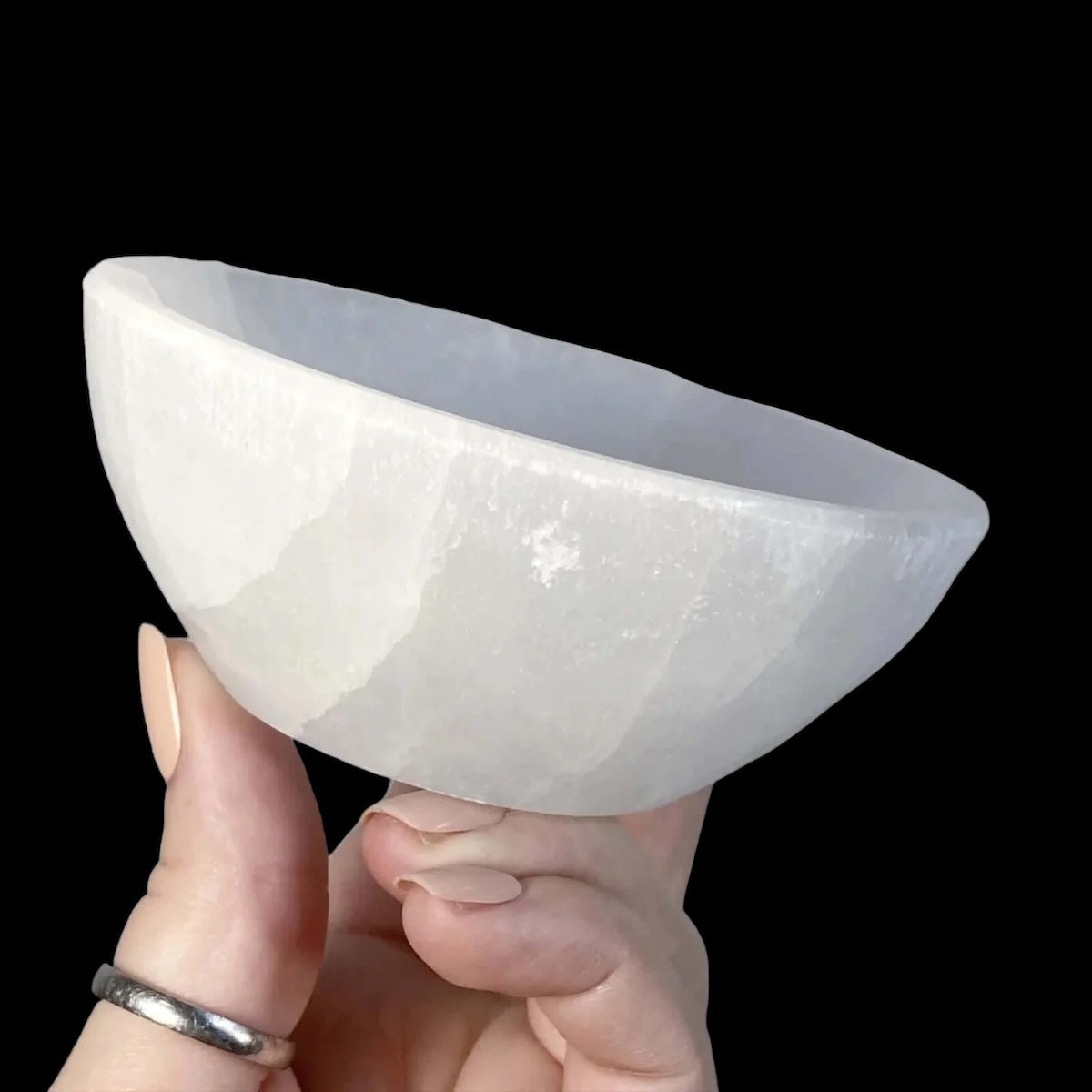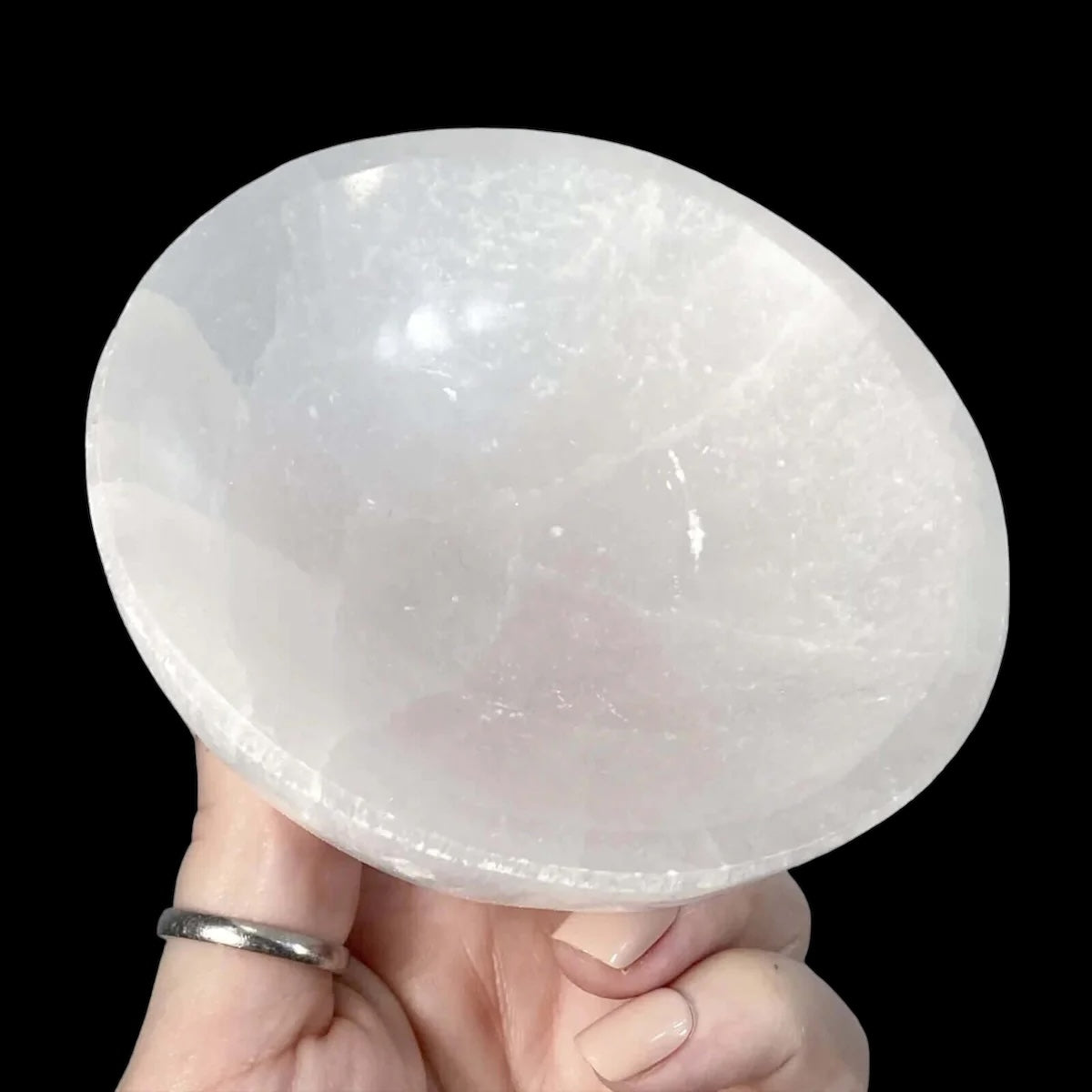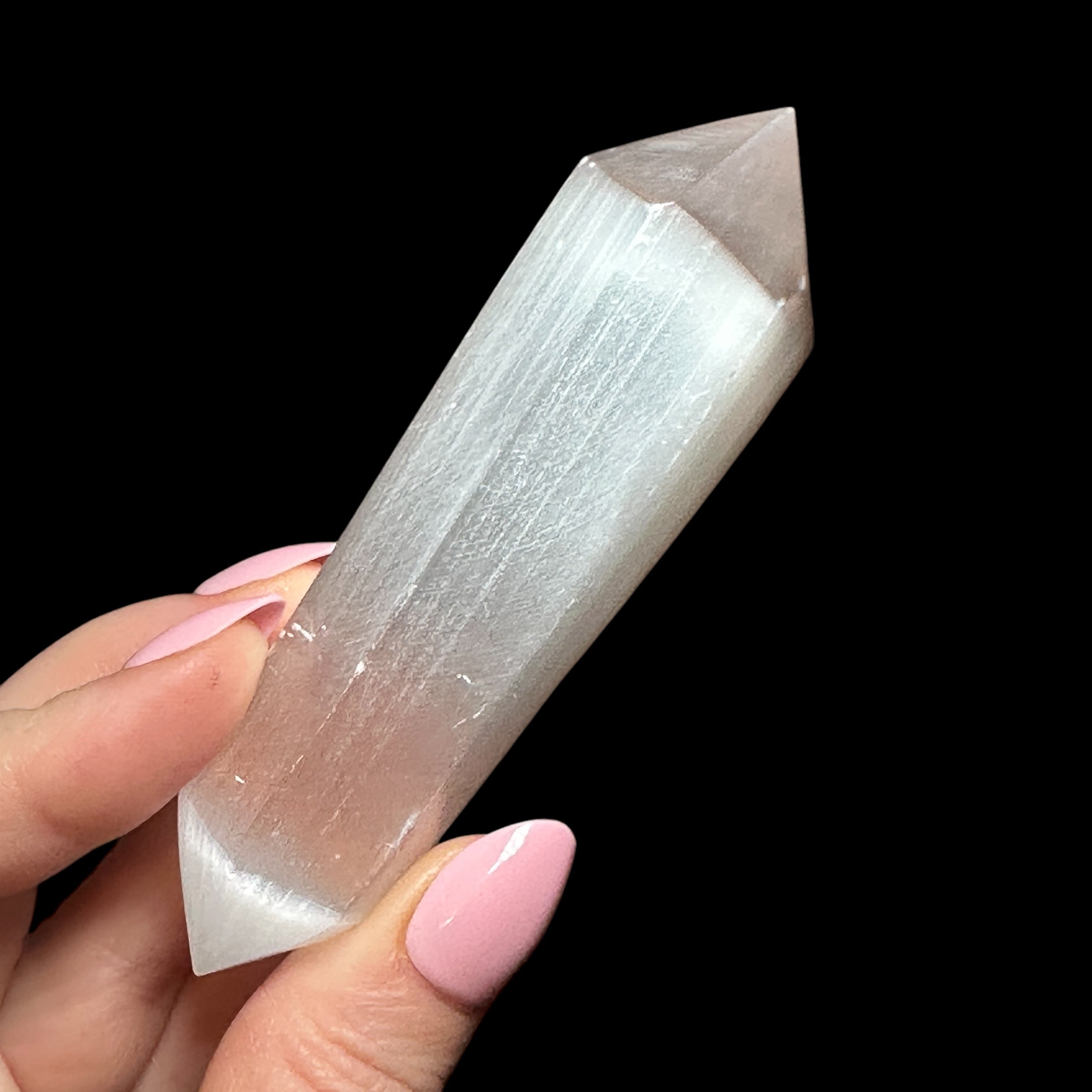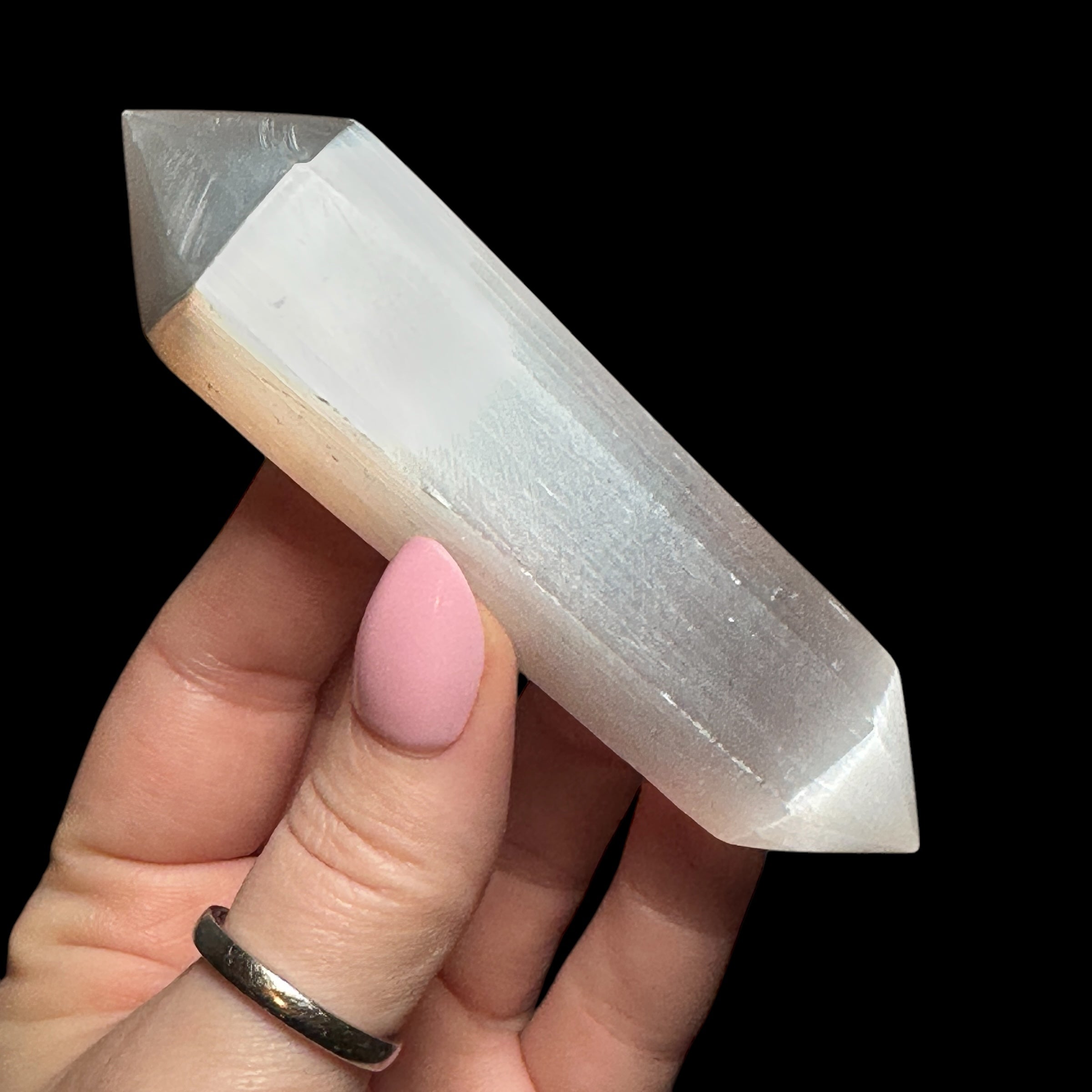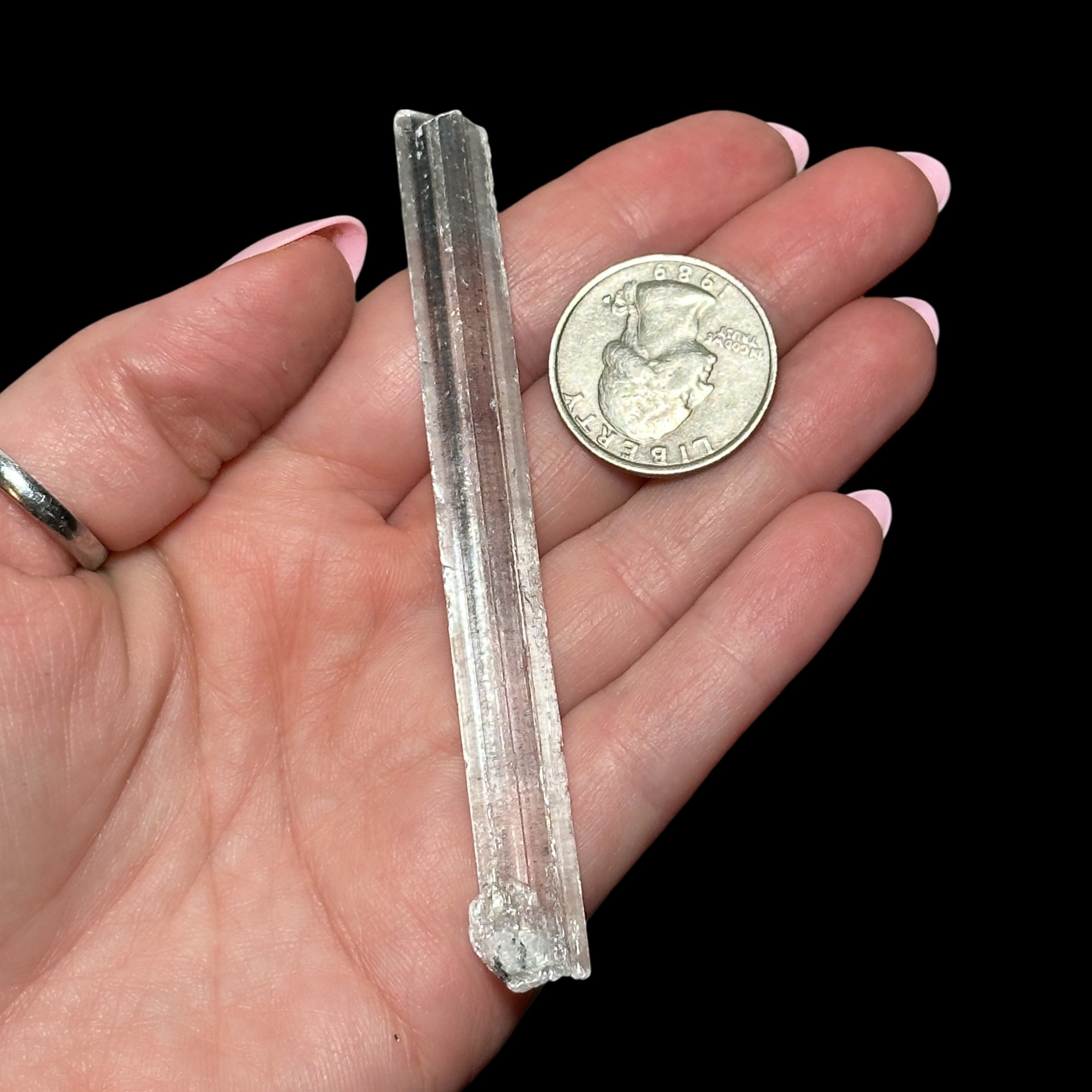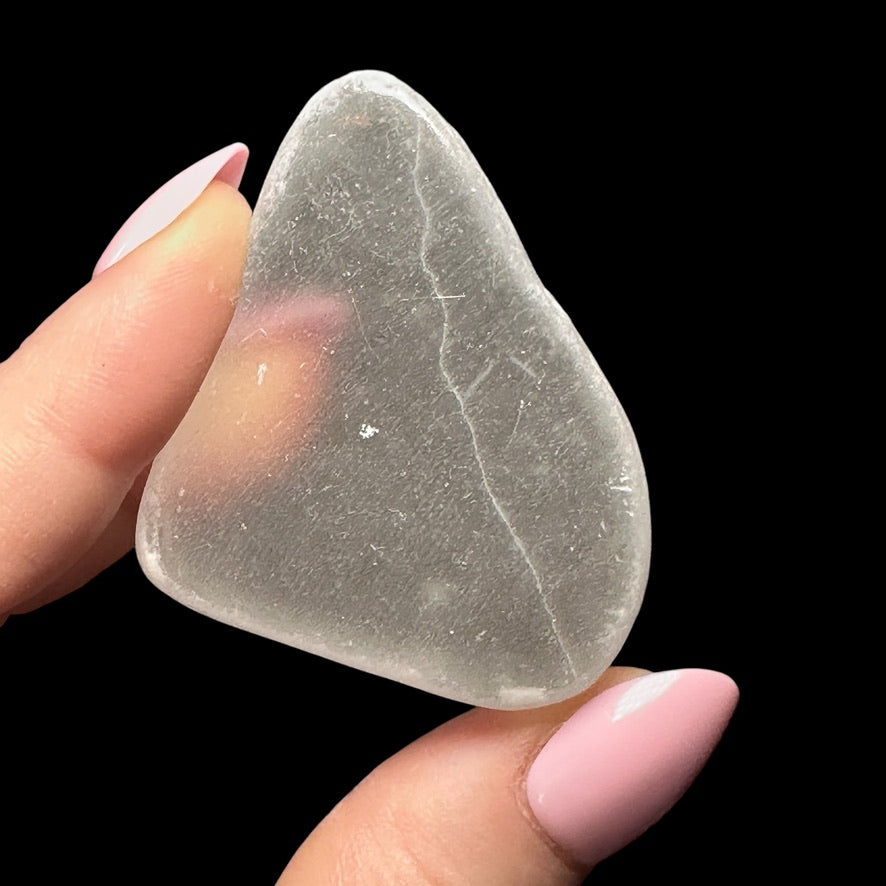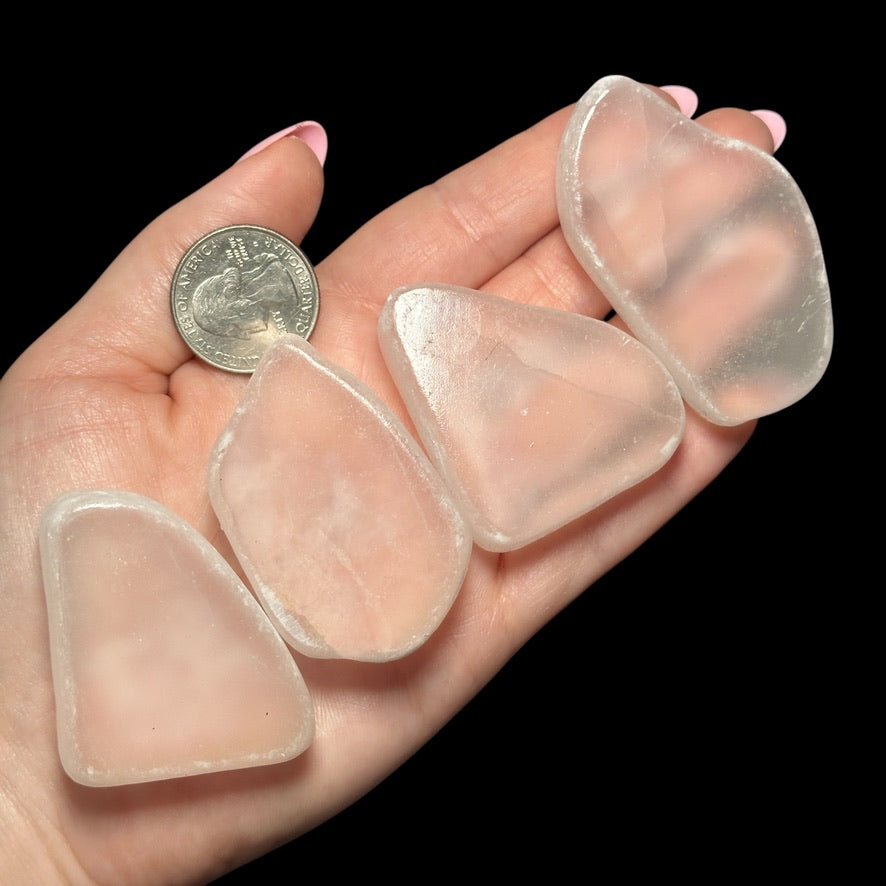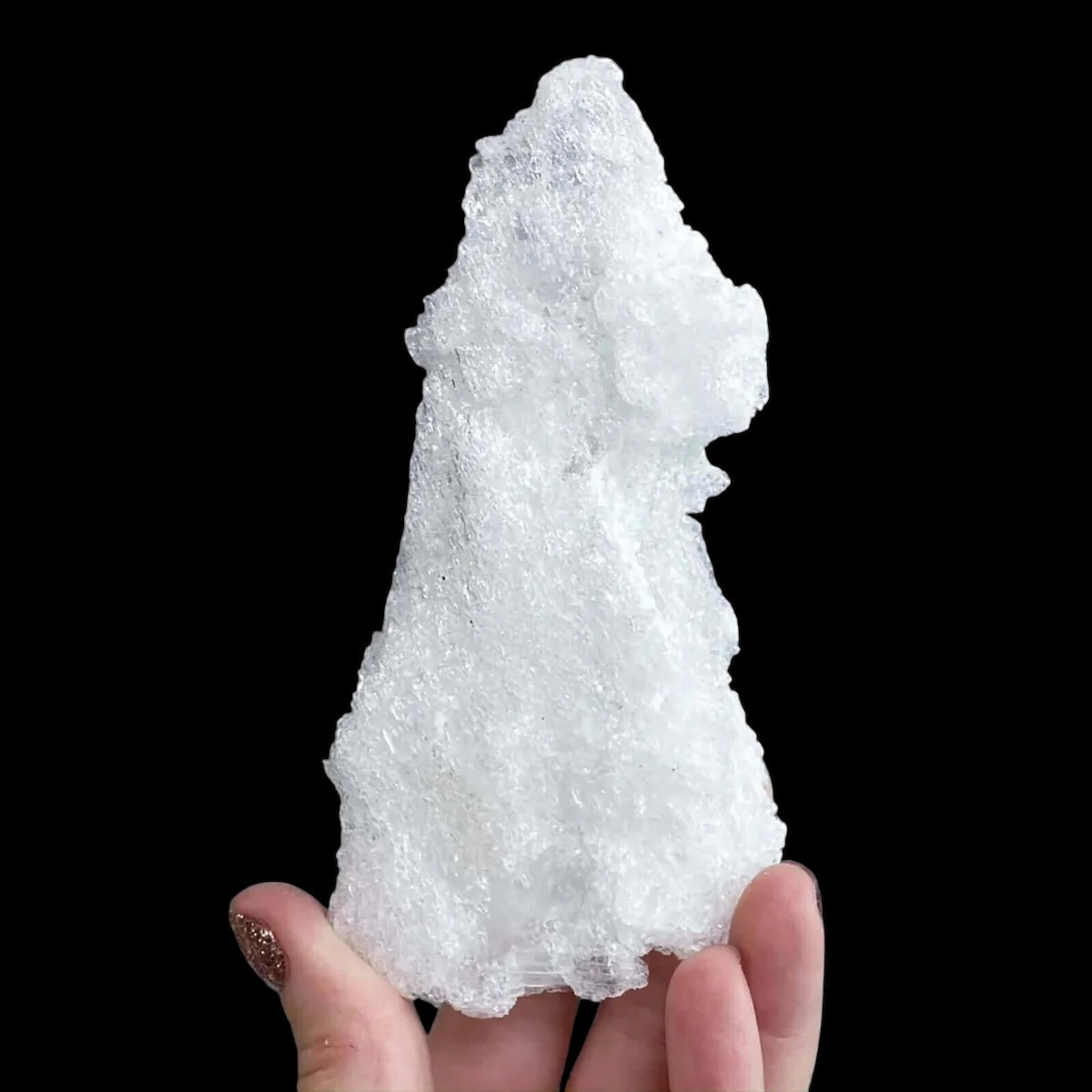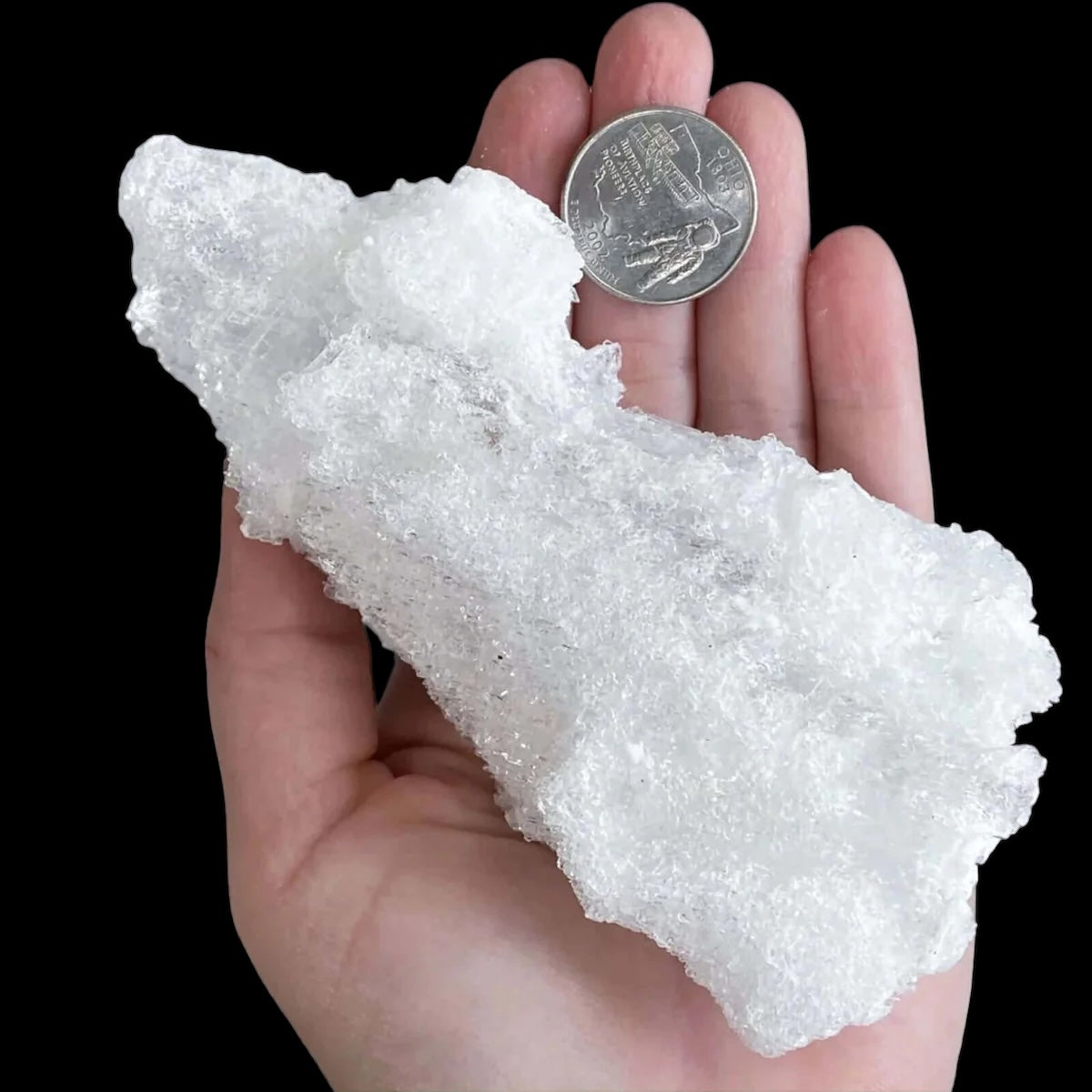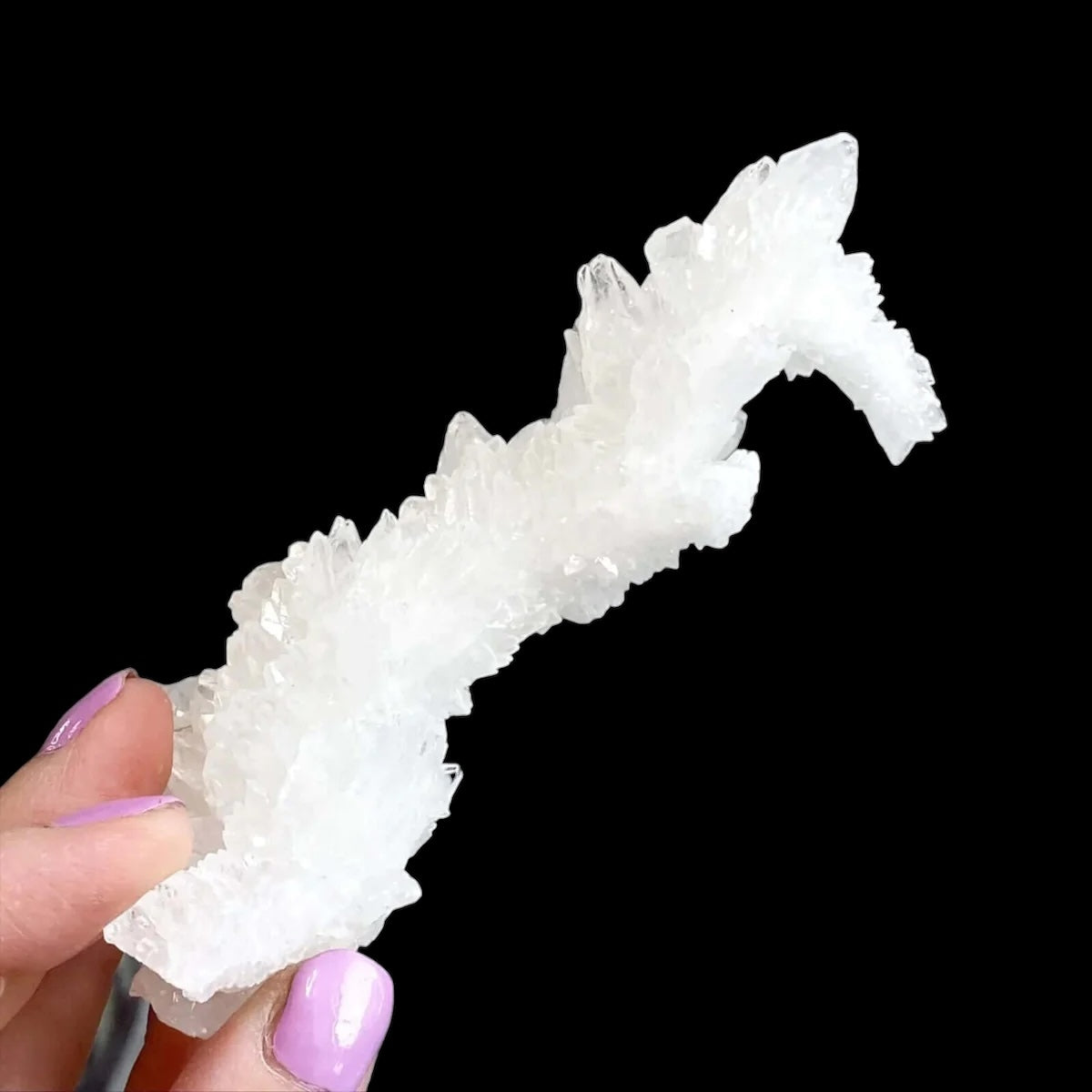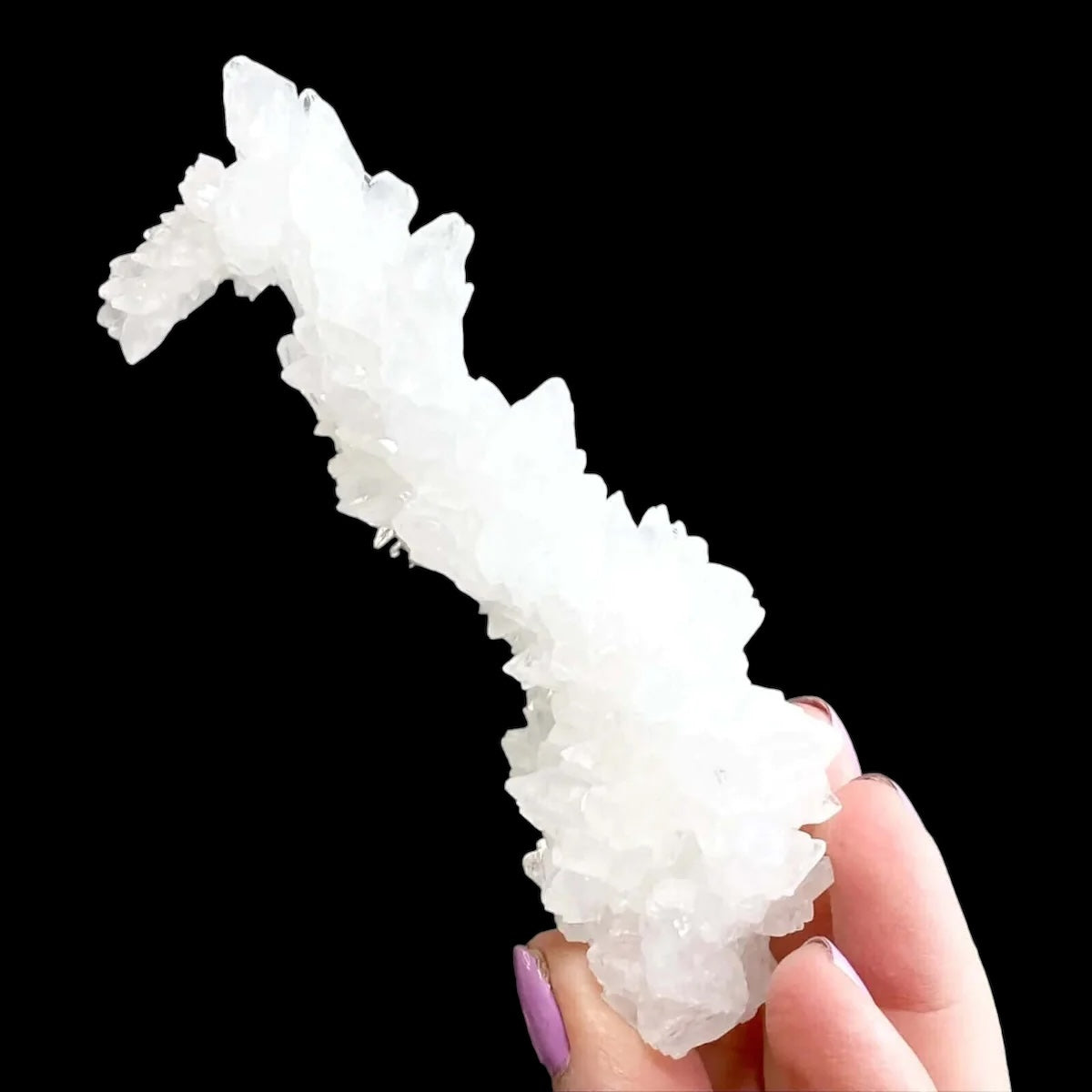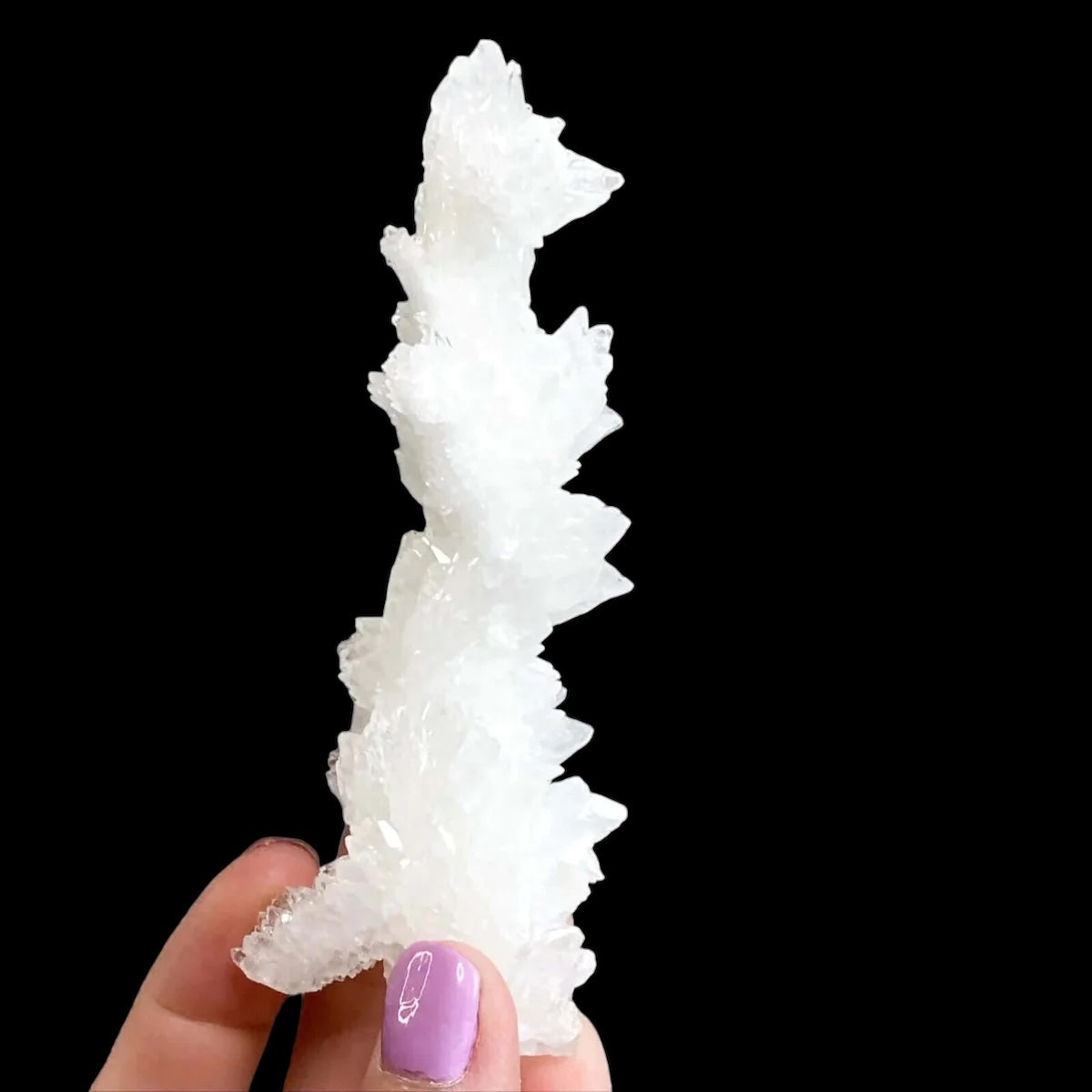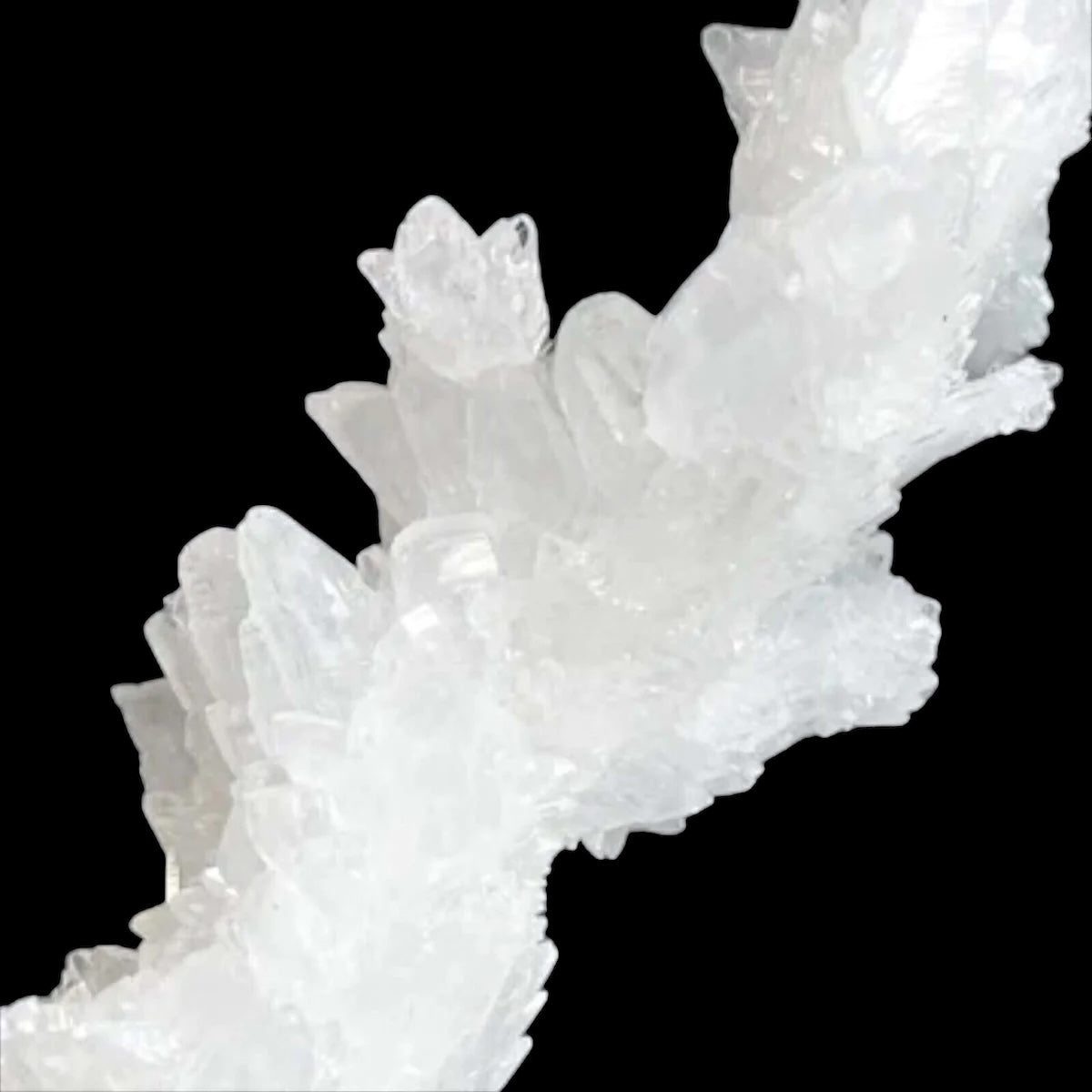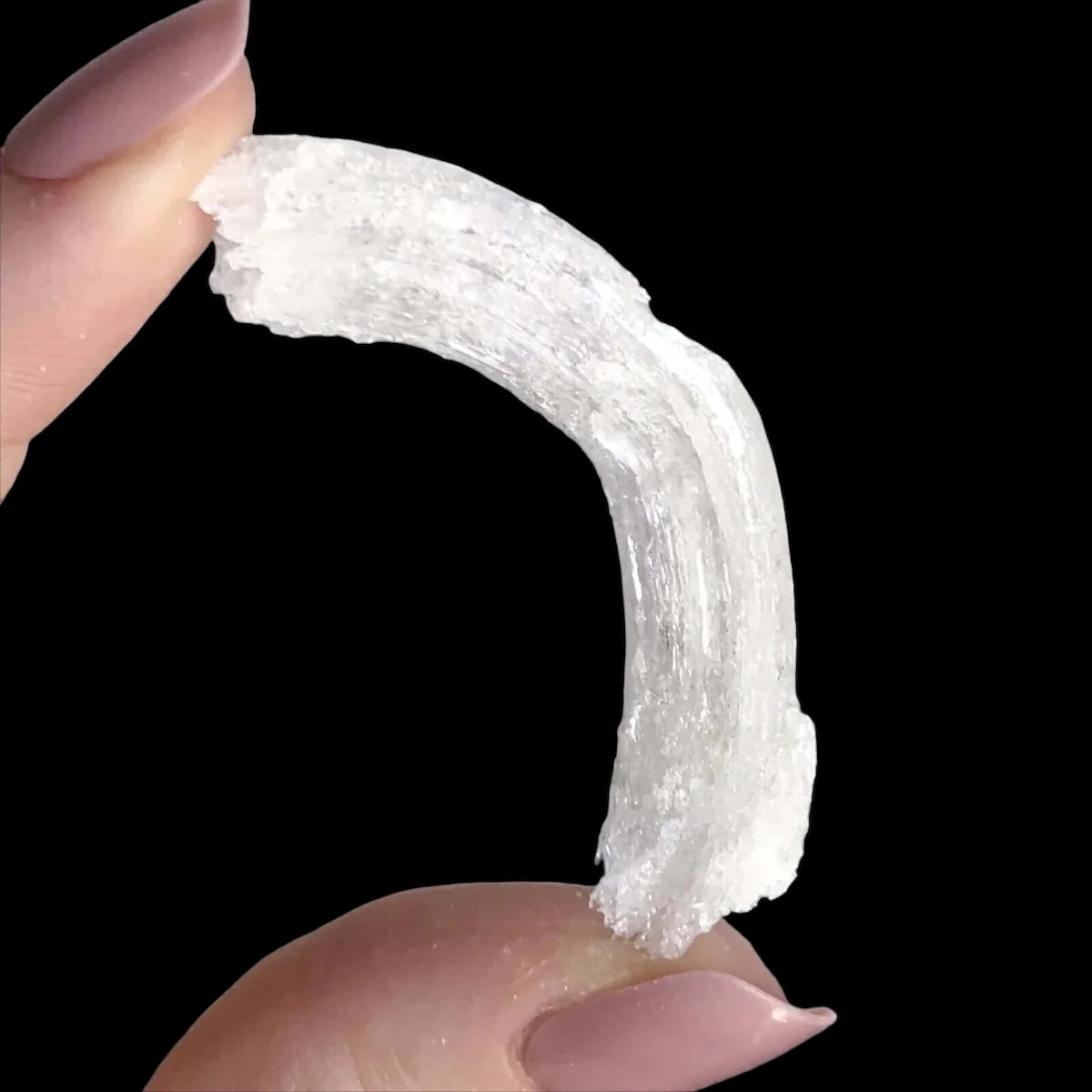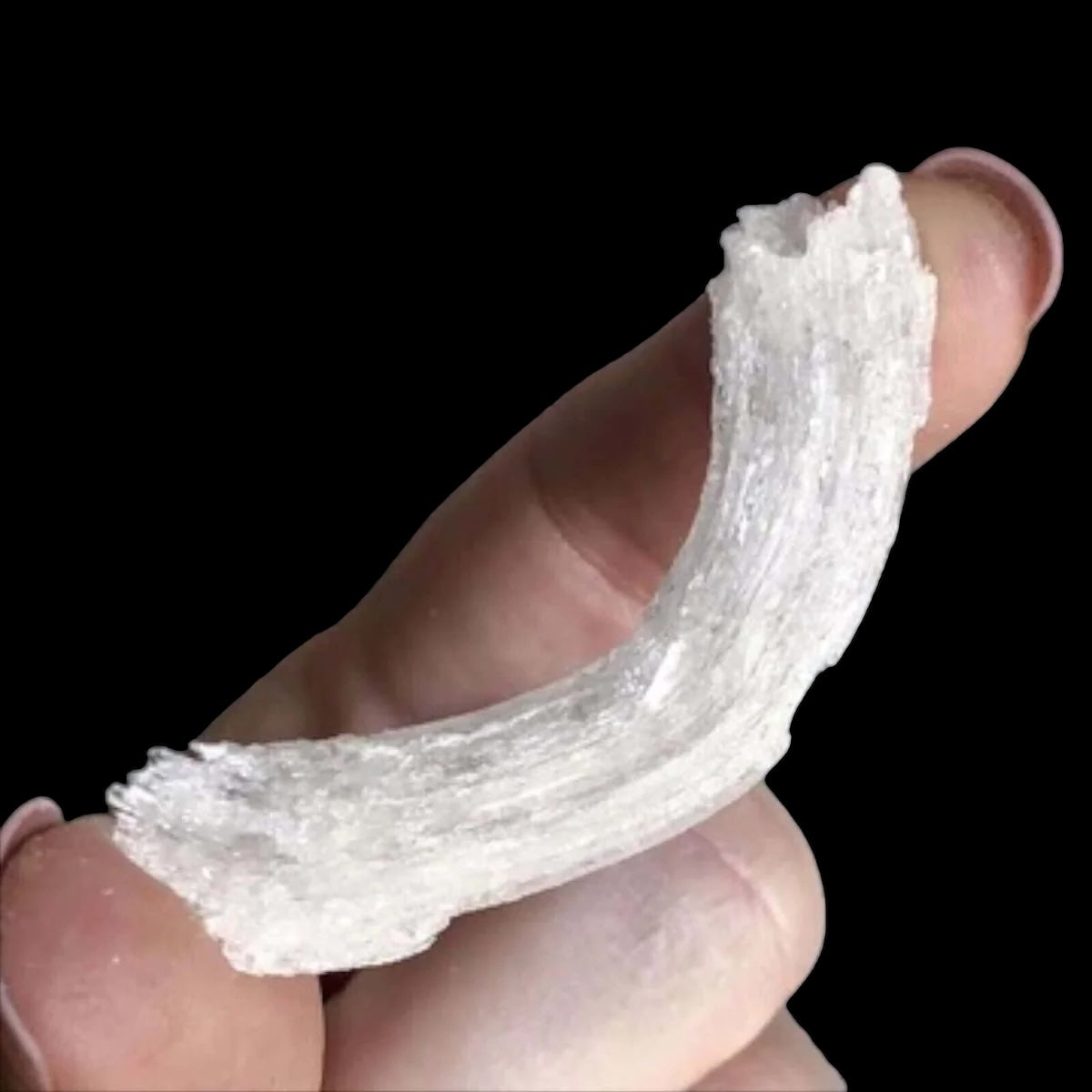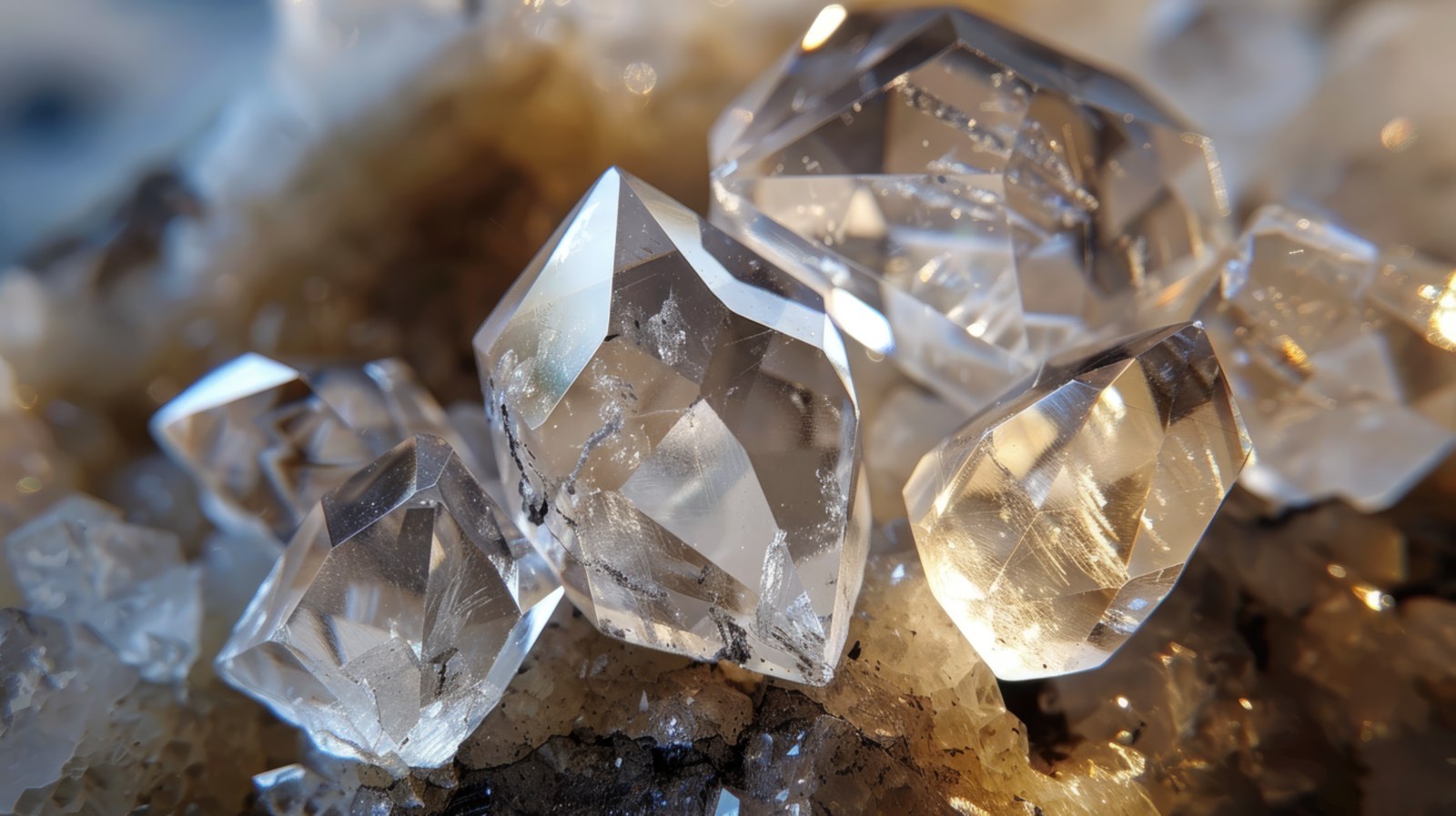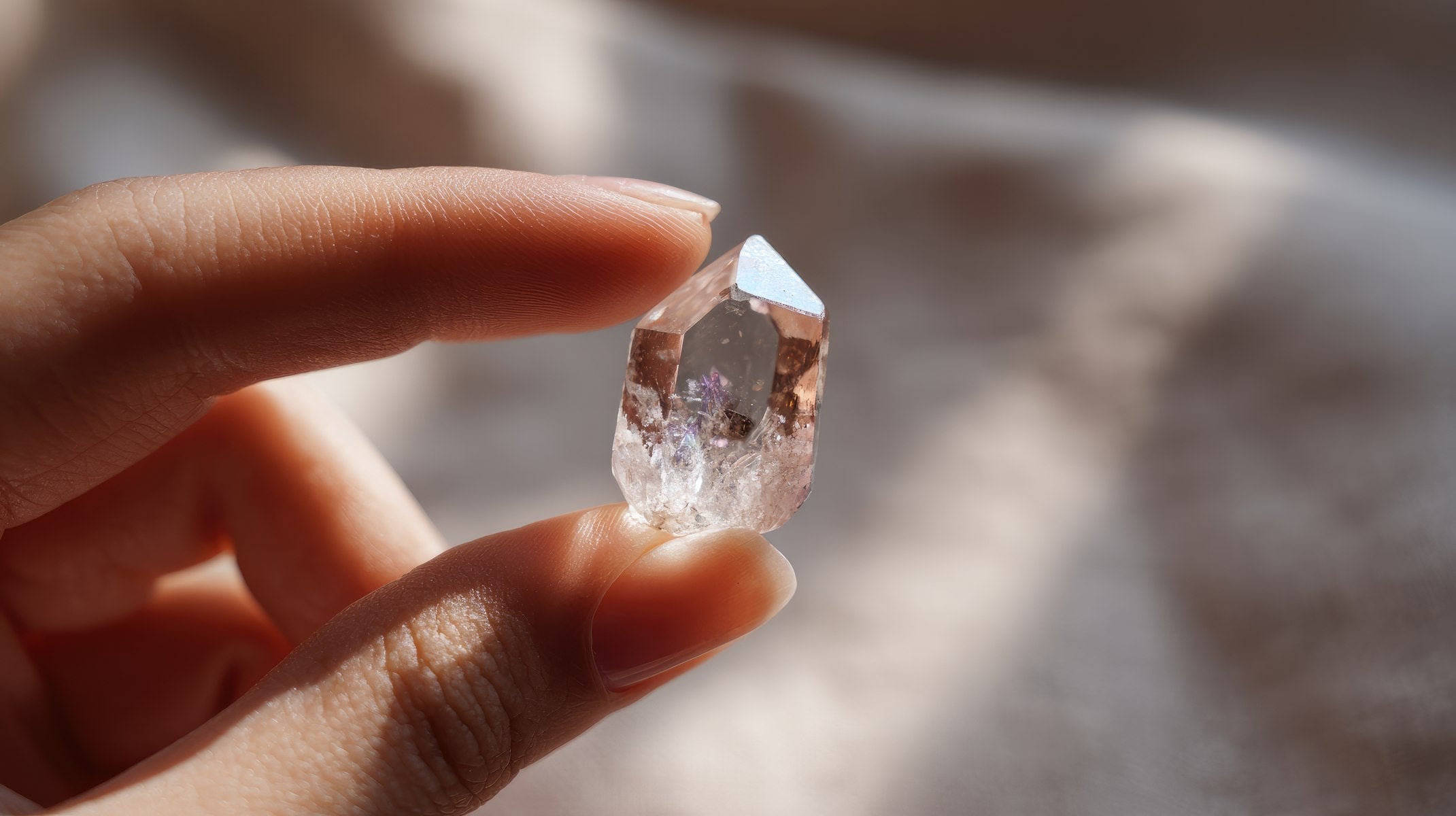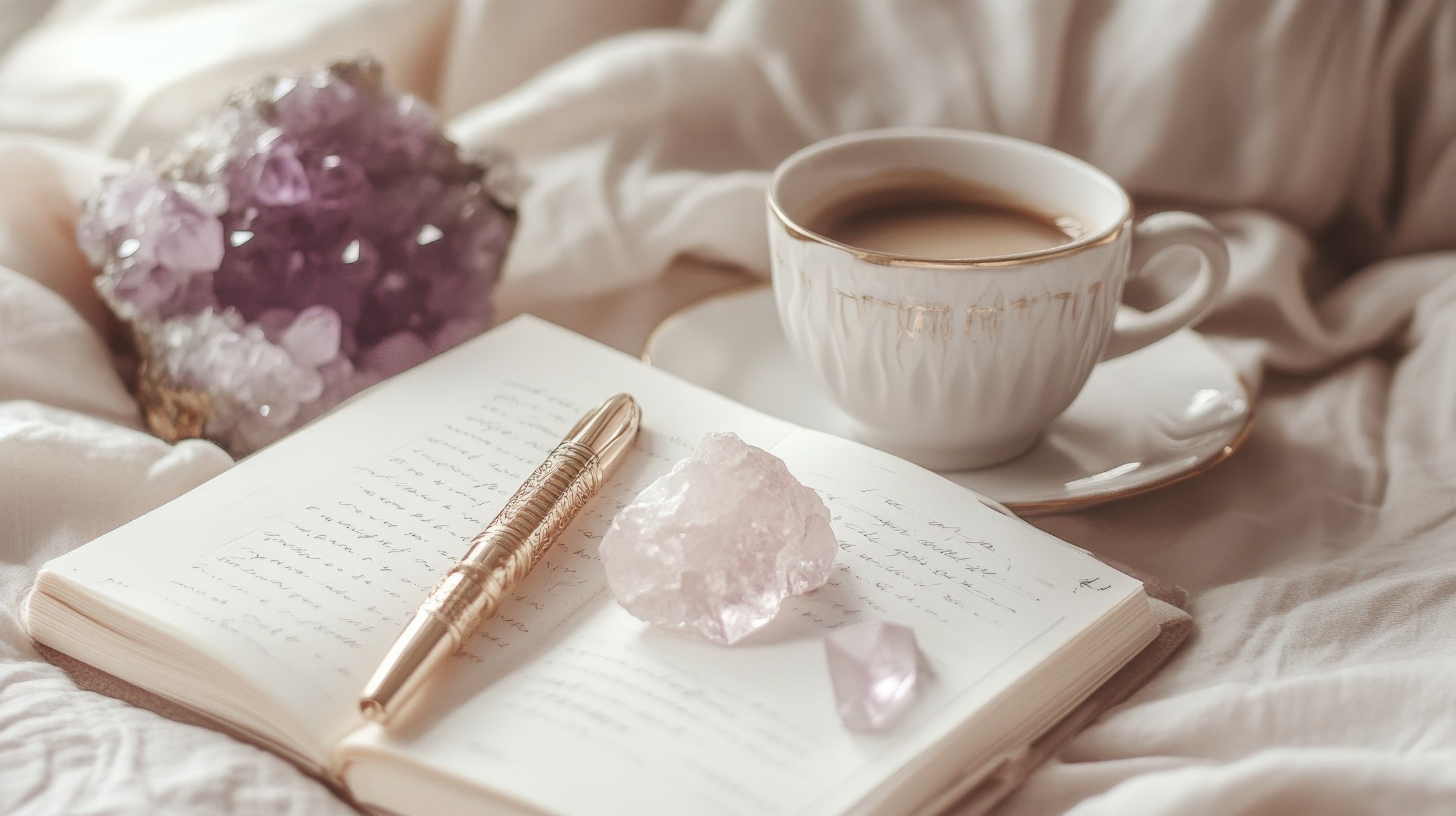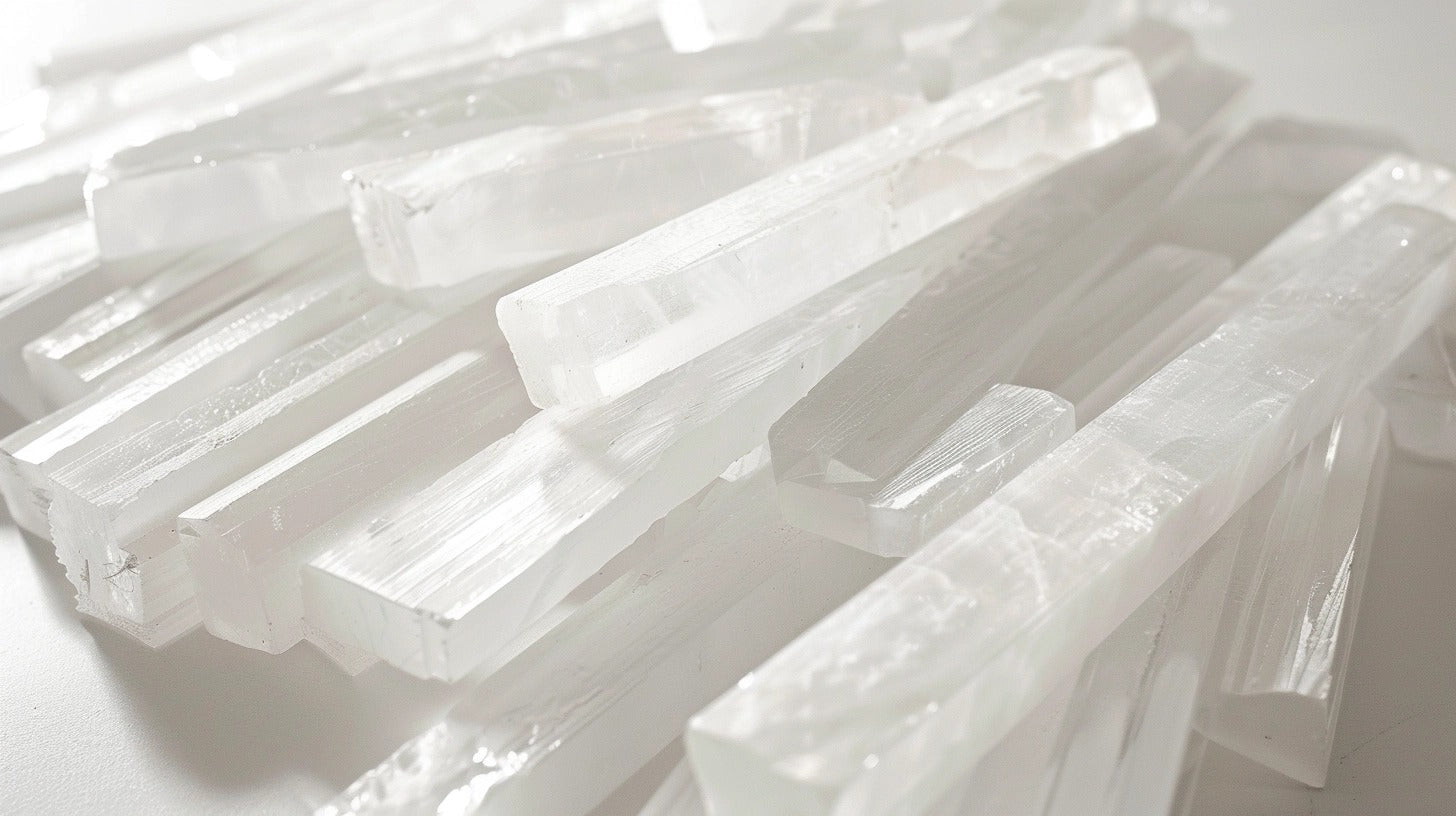
Selenite Properties

About Selenite
This blog is about selenite generally and applies to selenite, satin spar, and gypsum. All of these have similar properties – even though they are not exactly the same – and are generally discussed as all being “selenite.”
While these specific stones do have some of their own properties, they also share the general properties of selenite we discuss here.
If you are looking for ways you can use selenite, head to this blog post.
Physical Properties of Selenite
Contrary to what its name would suggest, selenite doesn’t contain any selenium. It’s a variety of mineral gypsum, which, when clear, is both translucent and colorless. What can affect its look is the presence of other minerals or microcrystals forming on selenite’s surface.
Selenite is a relatively soft stone, with a hardness of two on the Mohs scale. This makes it somewhat unsuitable for jewelry, since it can be easily scratched. Satin spar is slightly harder, but still not ideal for jewelry as it can not only be easily scratched, but can also flake and splinter.
Selenite typically occurs in the U.S., including Oklahoma, Arizona, and New Mexico, Morocco, and Mexico.
Incredible selenite specimens have been found in the Naica Mine, measuring over 12 m long and weighing as much as 55 tons!
There are actually several crystals that we commonly call "selenite" but are actually a form of the mineral gypsum (selenite is one form of gypsum). For example, we know the typically inexpensive, fibrous, luminous white material, often formed into sticks, spheres, and candle holders, as selenite. Found in Morocco, this specific form of gypsum actually has a different "proper" name: satin spar. However, we see it so commonly called selenite (by vendors, buyers, and crystal experts) that it almost strange to discuss it by any other name.
Note: Satin spar selenite shares many of the same physical and metaphysical properties as "just selenite" and both have the same chemical composition: CaSO4·2H2O. Simply calling satin spar, "selenite" is not incorrect.
Selenite that forms in the desert or dry, sandy areas, with sand inclusions and an easily-recognizable, flower-like shape, is known as desert rose, desert rose selenite, or as gypsum roses. These can be found in Arizona (desert rose selenite) and Mexico (desert roses). Another desert-forming variety of selenite is hourglass selenite, which forms in hourglass-shaped blades, with translucent edges and "hourglass sand"-like inclusions of sand/dirt inside. These have been found in Oklahoma.
The selenite that people often think of as "regular" selenite forms in plates and massive sheets. This selenite differs from the fibrous ("satin spar selenite") form. A specific example of this selenite which forms in Utah is named Utah ice selenite, because of its glassy, frosty appearance: in fact, pieces can often resemble ice cubes or hunks of ice.
There are many more formations of selenite: interesting varieties have been found in Poland (these look like tacos); Roswell, NM (a funky variety with all kinds of ridges and grooves); naturally curled pieces from Mexico called Ram's Horn Selenite; ultra rare enhydro selenite from Mexico; and even a uv-reactive form found in the Winnipeg Causeway, in Canada.
History and Uses of Selenite
Selenite’s name is derived from a Greek word meaning moon. For a long time, selenite was believed to be a unique gift from the moon goddess Selene, who was said to drop it from her habitation on the moon, down on earth. It's interesting to note that selenite isn’t the only stone with this type of history; moonstone’s past is nearly the same.
Selenite is said to be a great crystal to work with during a full moon.
Energetic and Metaphysical Properties of Selenite
Selenite helps cleanse and clear out low or stagnant energy and bring in light, clean, clear energy. It is purifying, uplifting, and aids in alignment. It is said to aid communication with our higher selves and with Universal consciousness, as well as helping you tap into the higher good.
Selenite is an excellent crystal to use with meditation, energy healing, or other vibrational support or practices.
Selenite is said to align to those born under the Zodiac sign of Taurus. In Feng Shui, selenite is said to contain fire energy.
Selenite is also associated with sahasrara (the crown chakra) and padaka-pancaka (the soul star chakra). If you're looking for a stone that will help you to quickly raise your vibration, connect to the divine, or speak to your guardian angels, try a piece of selenite.
Selenite is said to foster clarity of the mind, heal one’s etheric body, and repair holes in the auric field.
Those who have been exposed to negative energy for long periods, or are stuck in a negative vortex, may well benefit from using selenite.
Selenite might inspire you and give you the courage to start a personal revolution, too. This is because selenite is said to give you access to the abilities you possessed in your past lives, and reconnecting to them is said to boost your inner power.
Selenite Associations
Astrological: Taurus
Chakra: Crown
Elemental: Fire
Keywords: Clearing, Uplifting, Connecting
